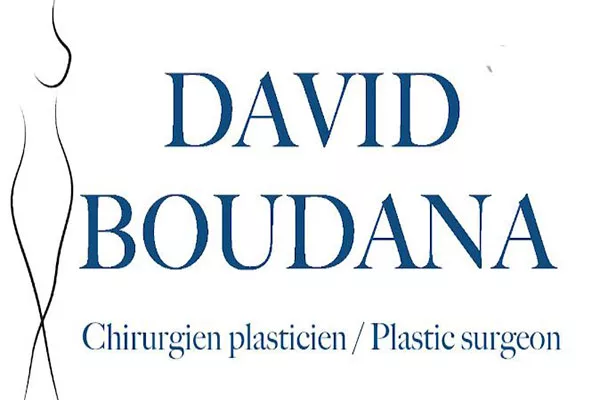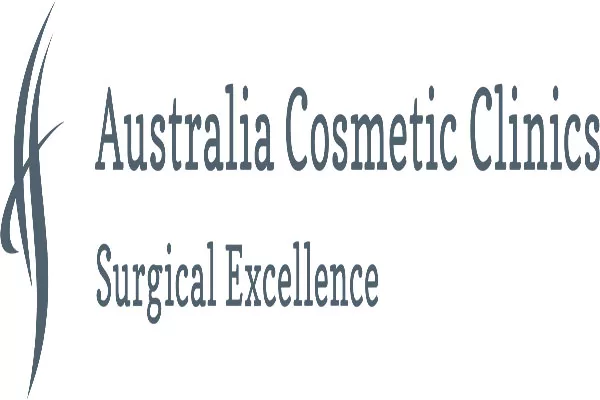Lip fillers have become increasingly popular in recent years as a non-surgical solution for anyone looking to enhance the volume and shape of their lips. This cosmetic treatment involves using injectable fillers containing hyaluronic acid, collagen, or fat to make the lips appear fuller and more plump.
While lip fillers come with their own set of risks and potential side effects, they remain a popular choice for many people seeking a quick fix for thin or asymmetrical lips. In this article, we will explore everything you need to know about lip fillers, from the different types of fillers available to the procedure itself and the recovery process.
Types of Lip Fillers
Not all lip fillers are created equal, and there are several types available on the market today. Here are the most popular options:
- Hyaluronic Acid Fillers:
Hyaluronic acid fillers are the most commonly used type of lip filler. This is because they are temporary, reversible, and provide natural-looking results. The most popular hyaluronic acid fillers for lips are Juvederm and Restylane. They last around six months to a year and can be dissolved with an enzyme if the results are not satisfactory.
- Collagen Fillers:
Collagen fillers are made from bovine or human collagen and are generally used to treat fine lines and wrinkles. They are less commonly used for lip augmentation as they are less long-lasting than hyaluronic fillers.
- Fat Transfer:
Fat transfer to the lips involves taking fat from the patient’s body, typically from the thighs or abdomen, and injecting it into the lips. This procedure is more invasive than injectable fillers and requires a longer recovery time, but the results can last up to 5 years.
- Synthetic Fillers:
Synthetic fillers, such as silicone, are typically avoided for use in the lips as they are more prone to complications and are not reversible. It is essential to avoid such fillers for lip enhancement because they don’t dissolve or get absorbed by the body, causing permanent damage.
Before choosing a lip filler, it’s important to consult with a qualified medical professional to determine which option is right for you.
Who is a Good Candidate for Lip Fillers?
Lip fillers can be an excellent option for anyone looking to enhance their lips’ volume and shape. However, not everyone is a good candidate for this cosmetic procedure. Here are some factors that may make you a good candidate for lip fillers:
- Thin Lips: If you have naturally thin lips or have lost volume in your lips due to aging, lip fillers can provide a subtle, natural-looking enhancement.
- Asymmetrical Lips: If your lips are asymmetrical, lip fillers can help to balance them out, making them look fuller and more even.
- Good Health: You should be in overall good health with no active infections or conditions that could impact the treatment’s safety.
- Realistic Expectations: It’s important to have realistic expectations for the results of lip fillers. While they can provide a noticeable enhancement, they are not a miracle cure and cannot completely transform your appearance.
- Age: There is no age limit for lip fillers, but it is recommended that patients be at least 18 years old to undergo this procedure.
It’s important to discuss your medical history and any medications you are taking with your doctor before undergoing lip filler treatment to ensure that it is safe for you.
Lip Filler Procedure
The lip filler procedure is typically performed in-office and takes around 30 minutes to complete. Here are the basic steps involved in a typical lip filler treatment:
- Consultation: The first step is to schedule a consultation with a qualified medical professional, who will examine your lips and discuss your goals and expectations for the procedure.
- Numbing: An anaesthetic cream or injectable anaesthetic may be used to numb your lips and minimize any discomfort during the procedure.
- Injection: The filler is then injected into the lips using a very fine needle. The injection process typically takes around 10-15 minutes, and the doctor will carefully monitor the results to ensure they are symmetrical and natural-looking.
- Massage: After the injection, the doctor will massage the lips to evenly distribute the filler and achieve the desired fullness and shape.
- Aftercare: You may experience some swelling and bruising in the days following the procedure, but this should subside within a week. Avoid eating or drinking for 30 minutes after the treatment, and avoid wearing lipstick for the first 24 hours.
The results of lip fillers are immediate, and you should notice a visible difference in the size and shape of your lips. However, it’s important to remember that the results are not permanent, and you will need to have the treatment repeated every few months to maintain the effect.
Lip Filler Aftercare
Proper aftercare is essential for ensuring the best possible results from your lip filler treatment. Here are some tips to follow after your procedure:
- Avoid Touching Your Lips: Avoid touching your lips for at least six hours after the treatment to minimize the risk of infection.
- Avoid Certain Activities: Avoid strenuous activities, including exercise, and avoid consuming alcohol or hot drinks for the first 24 hours after the treatment.
- Ice the Area: Apply an ice pack or cold compress to the lips periodically for the first 24 hours to reduce inflammation and swelling.
- Keep your Head Elevated: Keep your head elevated while sleeping for the first few nights following the treatment. This can also help to reduce swelling.
- Stay Hydrated: Drink plenty of fluids, especially water, to keep your body hydrated and to help minimize the risks of complications after the procedure.
- Follow Up: Attend a follow-up appointment with your doctor to ensure that the results are as expected and to address any concerns or complications.
Remember, taking good care of your lips after the treatment is the key to achieving the best possible results from your lip filler procedure.
Risks and Side Effects of Lip Fillers
Like any cosmetic procedure, lip fillers come with their own set of risks and potential complications. Here are some of the most common side effects of lip fillers:
- Swelling and Bruising: Swelling and bruising are the most common side effects of lip fillers. These can typically be managed with over-the-counter pain medication and cold compresses.
- Infection: There is a risk of infection with any injectable procedure. Signs of infection may include redness, warmth, and tenderness around the injection site. If you notice these symptoms, contact your doctor immediately.
- Allergic Reactions: While uncommon, some patients may experience an allergic reaction to lip fillers. Symptoms may include itchiness, swelling, and difficulty breathing. Seek medical help immediately if you experience these symptoms.
- Lumps and Bumps: Sometimes, the filler can form lumps or bumps under the skin, which can be visible or palpable. These can typically be smoothed out with massage or dissolved with an enzyme.
- Migration: Fillers can potentially migrate from the injection site to other areas of the face, causing asymmetry or other complications.
- Tissue Death: In rare cases, lip fillers can cause tissue death or skin necrosis, which may require surgery to correct.
It’s essential to work with a qualified medical professional who has experience with lip filler injections to minimize the risk of complications and ensure the best possible results from the procedure.
Lip Filler Cost
The cost of lip filler injections can vary widely depending on several factors, including the type of filler used, the amount of filler required, and the experience of the injector. On average, the cost of lip fillers can range from $500 to $2,000, with most patients spending around $600 to $800 for a single treatment.
It’s important to remember that the cost of lip fillers is not just the cost of the product but also the cost of the injector’s expertise and skill. It’s worth researching and finding a qualified medical professional who has experience with lip fillers and can provide excellent results.
While some medical insurance policies may cover the cost of lip fillers, they are typically considered an elective cosmetic procedure and are not covered by insurance. It’s recommended to check with your insurance provider to see what, if any, coverage is available for this treatment.
Lip Fillers vs. Other Lip Enhancement Procedures
Lip fillers are not the only option for enhancing the size and shape of your lips. Here are some other lip enhancement procedures to consider:
- Lip Implants: Lip implants involve surgically inserting silicone or other materials into the lips to create a fuller appearance. This procedure is more invasive than lip fillers and requires a longer recovery time, but the results are longer-lasting.
- Lip Lift: A lip lift is a surgical procedure that involves removing a small amount of skin from the upper lip to make it appear fuller and more prominent. This procedure is more invasive than lip fillers and requires a longer recovery time, but the results are more dramatic and longer-lasting.
- Lip Augmentation with Autologous Fat Transfer: Similar to fat transfer, autologous fat transfer involves taking fat from one area of your body and injecting it into your lips. The procedure is more invasive than lip fillers but can provide more long-lasting and natural-looking results.
Ultimately, the best option for you will depend on your goals and objectives, existing health conditions, and personal preferences. It’s crucial to discuss all your options with a qualified medical professional to make an informed decision about which procedure is right for you.
Conclusion
Lip fillers are a popular cosmetic treatment that can enhance the size and shape of your lips, providing a subtle, natural-looking enhancement. While these treatments come with potential risks and side effects, they are generally considered safe when performed by a qualified medical professional.
It’s crucial to do your research and find a skilled injector with experience in lip filler injections to ensure the best possible results and minimize the risk of complications. Additionally, following proper aftercare procedures and discussing any concerns or questions with your doctor before and after the treatment is essential.
Ultimately, whether you choose lip fillers, lip implants, or another lip enhancement procedure, it’s essential to have realistic expectations and understand that the results are not permanent. With proper care and maintenance, however, the results of lip fillers can be long-lasting and provide a significant improvement in the appearance of your lips.
Frequently Asked Questions about Lip Fillers
Here are some frequently asked questions about lip fillers:
1. How long do lip fillers last?
The duration of results varies from person to person but typically lasts around 6-12 months. Repeat injections are necessary to maintain the results.
2. Is the process painful?
Most lip fillers contain a local anaesthetic, so the procedure is relatively painless. After the treatment, there may be mild discomfort.
3. Are lip fillers safe?
Lip fillers are considered safe when performed by a qualified and experienced medical professional, with a small risk of side effects and risks usually managed through proper aftercare.
4. How much do lip fillers cost?
The cost varies depending on the type and amount of filler, with an average cost of $500-$2000.
5. Can I customize my results with lip fillers?
Yes, your results can be customized, with different types of fillers and injection techniques available to achieve your desired look.
Overall, lip fillers can be an excellent option for anyone looking to enhance the volume and shape of their lips. With proper research, aftercare, and maintenance, lip fillers can provide long-lasting results and a significant improvement in your overall appearance.
1. American Society of Plastic Surgeons. Lip Augmentation. https://www.plasticsurgery.org/cosmetic-procedures/lip-augmentation. Accessed August 3, 2021.
2. Dermal Fillers. American Society of Plastic Surgeons. Posted March 1, 2018. https://www.plasticsurgery.org/cosmetic-procedures/dermal-fillers. Accessed August 3, 2021.
3. Laub DR. Lip Augmentation: Frequently Asked Questions. American Society of Plastic Surgeons. https://www.plasticsurgery.org/cosmetic-procedures/lip-augmentation/procedure. Accessed August 3, 2021.
4. Mayo Clinic. Lip Augmentation: Risks. https://www.mayoclinic.org/tests-procedures/lip-augmentation/about/pac-20394559. Accessed August 3, 2021.
5. American Board of Cosmetic Surgery. What are Lip Fillers? https://www.americanboardcosmeticsurgery.org/procedure-learning-center/non-surgical/lip-fillers/. Accessed August 3, 2021.”







